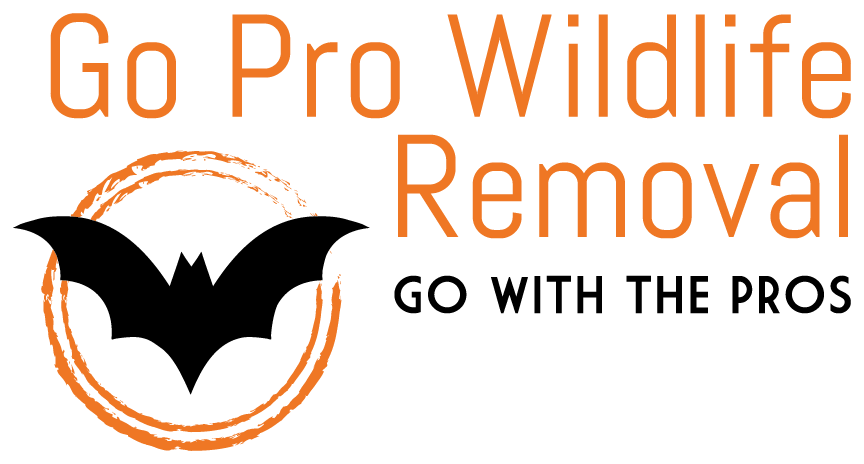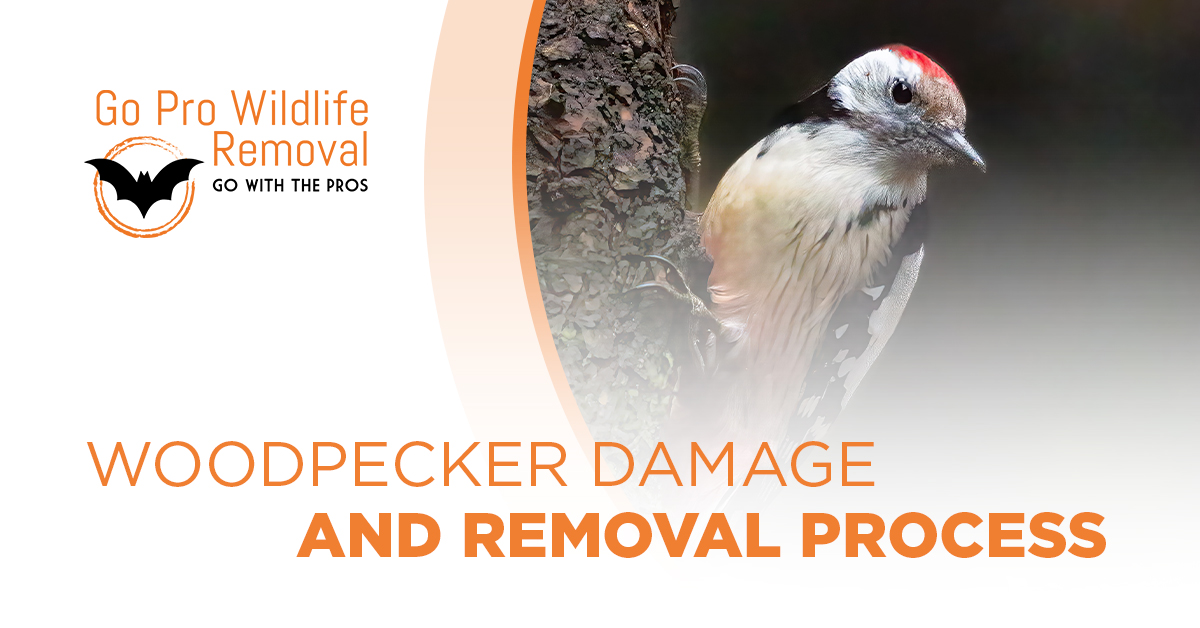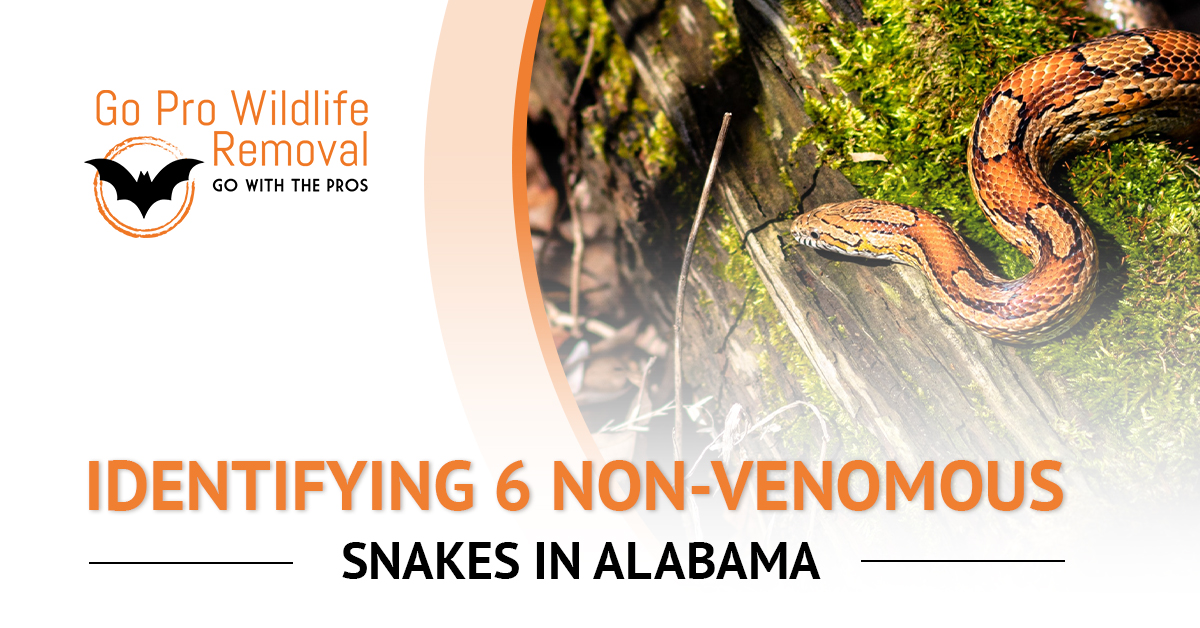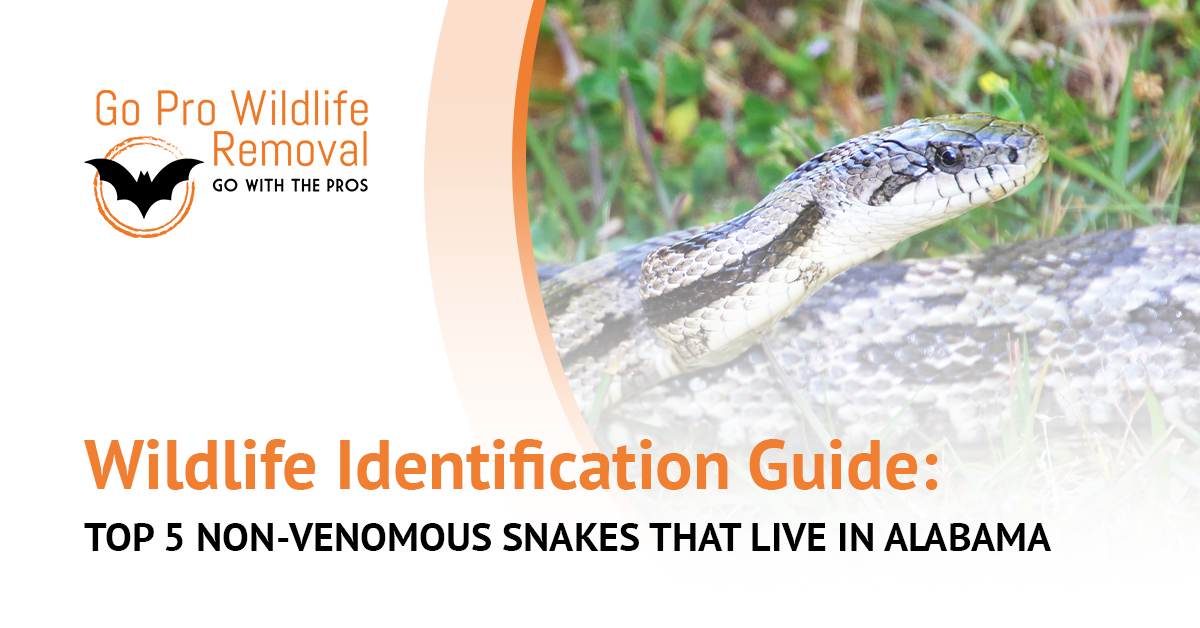by TRINDGROUP
Share
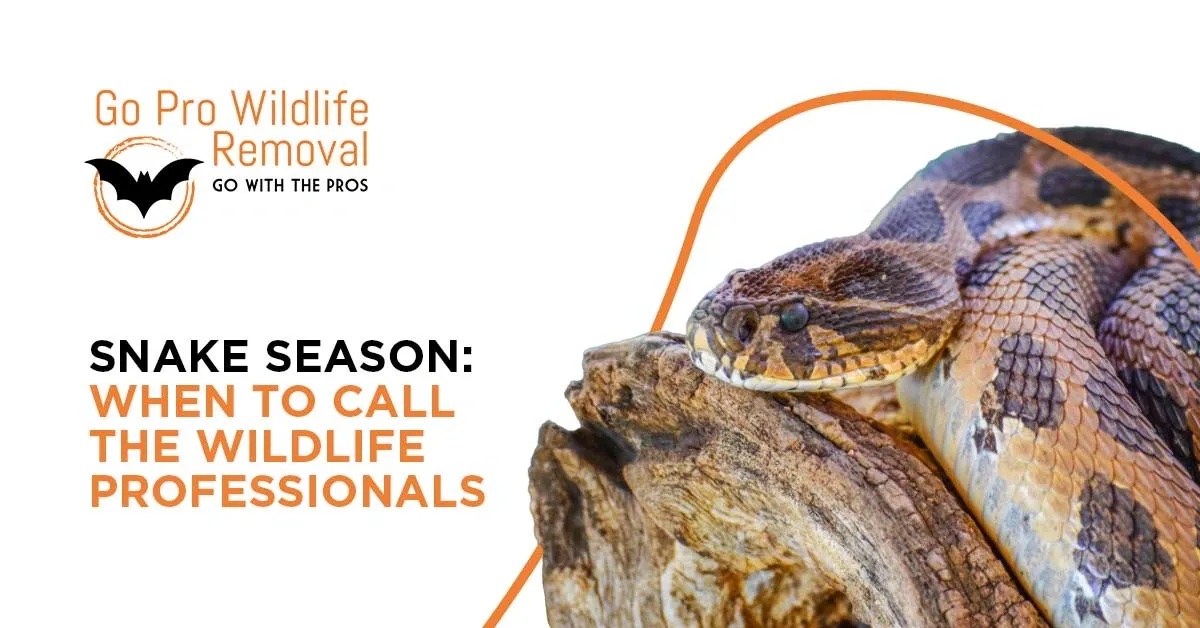
Warmer weather brings many critters out from hiding, including snakes. There are approximately 40 types of snakes that call Alabama home, and only six of them are venomous. Snakes are a natural part of the ecosystem in Alabama, which means it’s likely that you will run across one in your yard or while exploring the outdoors, especially during the spring and summer months.
Our team receives many calls about snakes in yards and homes, and we’re always happy to help our customers determine the best course of action for their wildlife issues. However, the best first step to take when it comes to dealing with snakes is preventive – take the time to learn about the snakes that live in your area, including what they look like and their behavior patterns, so you can feel more confident in determining if a snake could be a true threat to your family.
Why Snakes Might Hang Out in Your Yard
Snakes are commonly found in residential areas, especially those near bodies of water, in newer developments that overtook woodlands, and in rural locations. Even though it can be startling or scary to run across them unexpectedly, it’s normal for a snake to be in your yard.
Snakes seek shelter in areas with coverage, like in heavy vegetation, piles of leaves, under rocks and in cracks. Where there is shelter, there is usually a food source for snakes as well – this includes rodents, insects, amphibians, fish and even chickens and their eggs. If your yard features a natural or artificial water source, snakes may be drawn to it as they need water to survive.
What Should I Do if I See a Snake at Home?
Usually, nothing! According to Wild Snakes Education and Discussion (WSED), “Snakes are an important part of the ecosystem, providing free pest control, and also by serving as a prey for other animals. In most cases there is no good reason to relocate snakes from a yard or property.”
We understand that snakes can be scary, especially to people who are unfamiliar with them or expect every snake to be venomous. This is why education and familiarization with local snake species is important. If you notice a snake in your yard and try to relocate it either on your own or through a wildlife removal specialist, the relocation is likely only a temporary solution. Snakes have home “ranges” that they travel in, and your yard is probably a part of its range, meaning it will likely make its way back.
Yard clean-up can help deter snakes because it removes the areas where they take shelter and find food and water. WSED says keeping your lawn trimmed, cleaning up brush and compost piles, removing excessive vegetation and sealing any foundation cracks or holes in outdoor buildings can also help to cut down on snake visits.
How to Deal with Venomous Snakes
First, remember that not all snakes are venomous. Learn how to identify venomous snakes in your area. If you have children, teach them how to avoid snakes and what to do if they see a snake. Kids should watch snakes from a distance, and report seeing it to an adult. They should also avoid flipping over rocks and branches, putting hands into holes and playing in heavily vegetated areas.
If you have pets or other animals that roam your property, make sure your yard is cleaned up to lower the chance of snakes calling your yard home.
Remember, if you, a family member or pet has been bitten by a snake, seek medical treatment immediately. At-home “cures” for snake bites do not work, and only a medical professional can treat venomous snake bites.
Does Snake Repellant Work?
We echo what WSED mentions in its article – snake repellants are scientifically proven to NOT work. “Do not waste your money and time on these, which include “Snake-A-Way” and other similar products.” Other “quick fixes” including mothballs and gasoline can be poisonous and are also dangerous and even illegal to put into the environment.
However, snake proof fencing can work if you’re trying to avoid having venomous snakes in your yard. This type of fencing will not prevent all snakes from entering your yard, as some snakes can climb.
Go with the Pros
We appreciate any opportunity to serve our customers and know that it can be frightening to observe a snake in your yard or home. There are great resources, like this one from Alabama’s Extension organization, to learn about snakes native to Alabama and how to navigate any snake encounters you may have.
If you are in need of snake removal services in Auburn, Opelika, Montgomery, Lake Martin or the surrounding areas, contact us today.
Five Most Common Places for Wildlife to Enter Your Home
Warm summer weather lures humans and animals outdoors to bask in the sun. Although you may appreciate the critters you encounter while in nature, having them invade your home is undesirable.
Five Most Common Places for Wildlife to Enter Your Home
Warm summer weather lures humans and animals outdoors to bask in the sun. Although you may appreciate the critters you encounter while in nature, having them invade your home is undesirable.
Case Study: Timely and Effective Raccoon Removal in Montgomery, AL
Homeowners never expect wildlife like raccoons, rodents or squirrels to cause problems within their dwelling, but issues can arise more often than one might expect.
Woodpecker Damage and Removal Process
The woodpecker is an unsuspected wild animal that can cause damage to your home or land.
Beaver Solutions to Prevent Property Damage
Beavers, known as North America’s largest rodent, know a thing or two about destruction.
Identifying 6 Non-Venomous Snakes in Alabama
As temperatures begin to rise in Alabama, more snakes will begin slithering their way out of hibernation.
Contact Info
Service Areas: Contact Go Pro today! We offer wildlife removal solutions in Auburn, Opelika, Lake Martin, Valley, Montgomery, AL and Columbus, GA areas.
Phone: (334) 744-0391
Hours: Open 9:00 am – 5:00 pm
The woodpecker is an unsuspected wild animal that can cause damage to your home or land.
As temperatures begin to rise in Alabama, more snakes will begin slithering their way out of hibernation.
Human-Animal Relationship Awareness Week was created by the Institute of Animals and Society to highlight the connection between humans and animals and to promote a more positive attitude towards the well-being of animals.
Alabama is home to more than forty species of snakes. Although snakes can be frightening to cross paths with, not all of them pose a threat to humans.
